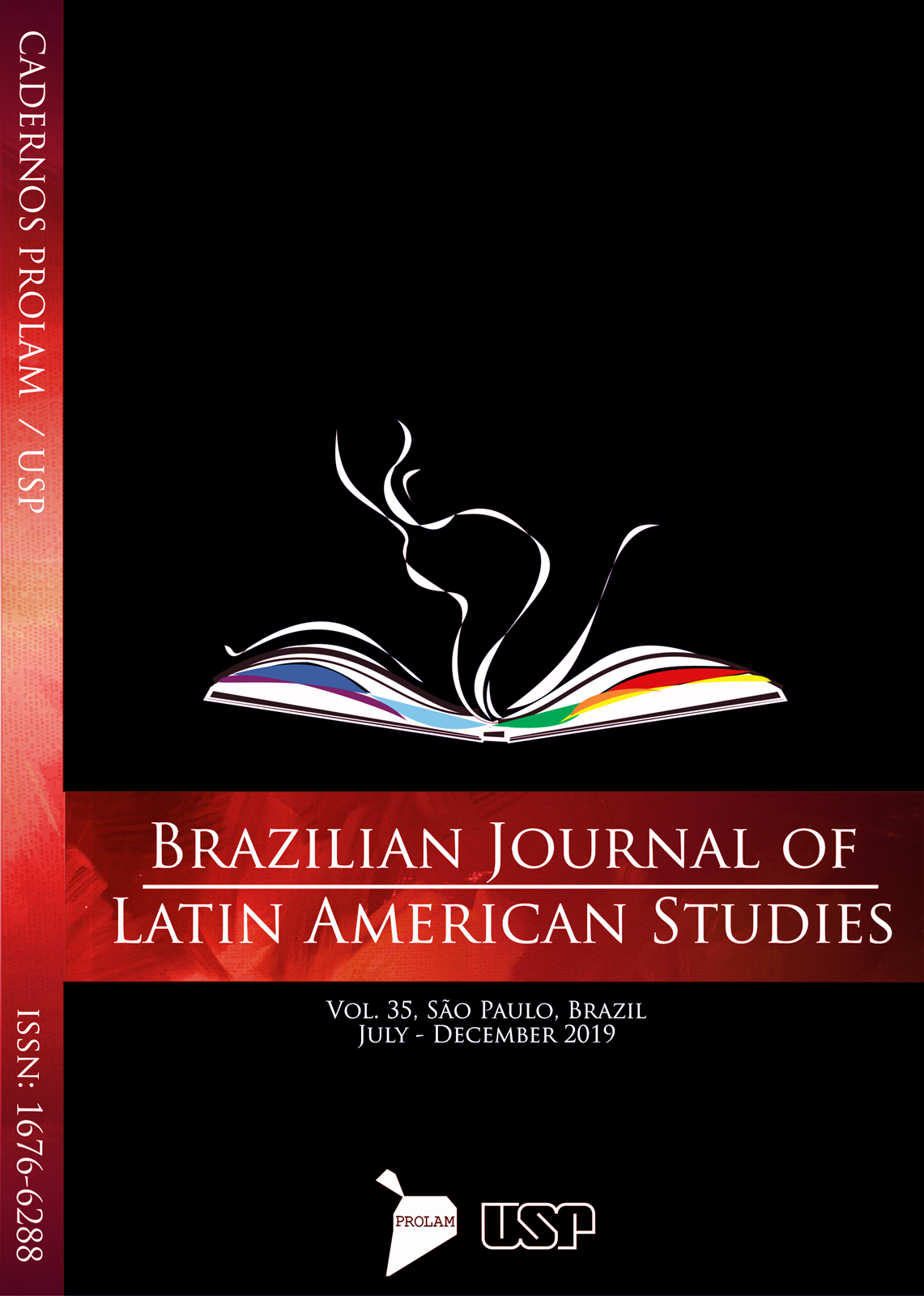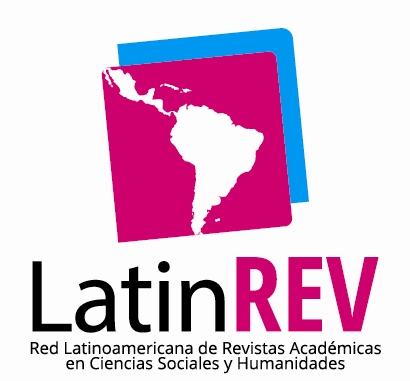Unidad cultural de Mesoamérica
el problema iconográfico jaguares o serpientes en la cultura olmeca fundacional
DOI:
https://doi.org/10.11606/issn.1676-6288.prolam.2019.163770Palavras-chave:
Pensamiento Mesoamericano, Iconografía Olmeca, Cosmogonía MesoamericanaResumo
Desde 1942 se estableció que la cultura olmeca no sólo era la más antigua de las civilizaciones autóctonas de México, Guatemala, Belice, El Salvador y las regiones occidentales de Honduras, Nicaragua y Costa Rica, sino que habría sido "la cultura madre" de todas las que la sucedieron, dotando de unidad cultural al complejo que hoy llamamos Mesoamérica. Pero esta interpretación oculta una contradicción irresuelta. Se admite universalmente que el numen toral de los olmecas era un ser jaguar, ya que sus imágenes divinas desde un principio se interpretaron como hombres felinizados. Sin embargo es la serpiente quien aparece central en los ámbitos de culto en todas las subsiguientes culturas. Este trabajo hace un recuento de las ideas acerca del sentido de las imágenes olmecas, revisa evidencia reciente que indica la predominancia en ellas de la serpiente, y concluye que la contradicción iconográfica, en la realidad no existe; tanto los olmecas como los pueblos que los sucedieron, representaron en sus imágenes divinas fundamentales, muchos felinos y aves, sí, pero fundamentalmente seres humanos con rostros estilizados por la presencia, naturalista o abstracta, de dos serpientes opuestas.
Downloads
Referências
ARQUEOLOGÍA MEXICANA. Atlas del México prehispánico. México, Editorial Raíces / Instituto Nacional de Antropología e Historia. Número Especial 5, p. 66, 2000.
BLOM, Franz Y LA FARGE, Oliver. Tribes and Temples. New Orleans: Tulane University, 1926.
BEYER, Hermann. Nota bibliográfica sobre ‘Tribes and Temples’ de F. Blom y O. La Farge. El México antiguo. v. 2, p. 305-313, 1927.
BONIFAZ NUÑO, Rubén. Imagen de Tláloc. Hipótesis iconográfica y textual. México: Universidad Nacional Autónoma de México, 1986.
BONIFAZ NUÑO, Rubén. Hombres y serpientes. Iconografía olmeca. México: Universidad Nacional Autónoma de México, 1989.
BONIFAZ NUÑO, Rubén. Olmecas: Esencia y fundación. Hipótesis iconográfica y textual. México: El Colegio Nacional, 1992.
CASO, Alfonso. Thirteen masterpieces of Mexican Archaeology. México: Editoriales Cultura y Polis, 1938.
CASO, Alfonso et al. (Eds.)Mayas y Olmecas. 2ª Mesa Redonda Sobre Problemas Antropológicos de México y Centro América. México: Sociedad Mexicana de Antropología, 1942.
COVARRUBIAS, Miguel. Origen y desarrollo del estilo artístico ‘Olmeca’. En: CASO, ALFONSO et al., (Eds.) Mayas y Olmecas. 2ª Mesa Redonda Sobre Problemas Antropológicos de México y Centro América. México: Sociedad Mexicana de Antropología, p. 48-49, 1942.
COVARRUBIAS, Miguel. El Arte ‛Olmeca’ o de La Venta. Cuadernos Americanos, v. 28, p. 153-179, 1946.
CHAVERO, Alfredo. Libro Primero, Capítulo I, En: México a través de los siglos. México: Editorial Cumbre, 2000 (1887).
DE JONGHE, Edouard. Histoyre du Mechique, manuscrit française inédit du XVIe siècle. Journal de la Société des Americanistes. Nouvelle Série, v. 2, p. 1-41, 1905.
DE LA FUENTE, Beatriz. ¿Puede un estilo definir una cultura?. En: URIARTE, MARÍA TERESA; GONZÁLEZ-LAUCK, REBECA (Eds.). Olmeca. Balance y perspectivas. México: Universidad Nacional Autónoma de México, 2008, p. 25-37.
GAY, Carlo T. Chalcacingo. Graz, Austria: Akademische Druck-u Verlagsanstalt, 1971.
KUNZ, George F. Gems and Precious Stones of North America. New York: The Scientific Publishing Corp., 1890.
LUCKERT, Karl W. Olmec religion. Oklahoma: University of Oklahoma Press, 1976.
QUESADA GARCÍA, Octavio, y CASTAÑEDA VALLE, Rodrigo. Iconografía Olmeca. Composición de signos y principio combinatorio. México: Universidad Nacional Autónoma de México, 2011.
SAVILLE, Marshall H. A votive adze of jadeite from Mexico, Monumental Records, v. 1, p. 138-140, 1900.
SAVILLE, Marshall H. Votive axes from ancient Mexico, I y II, Indian Notes, v. VI, n. 3, p. 266-299, jul. 1929; v. VI, n. 4, p. 335-342, oct. 1929.
SELER-SACHS, Caecilie. Altertümer des Kanton Tuxtla in Staate Veracruz. In: LEHMANN, WALTER (Ed.). Festschrift Eduard Seler. Stuttgart: Strecker und Schroder, 1922.
STIRLING, Mathew W. Great Stone Faces of the Mexican Jungle. The National Geographic Magazine, v. 78, n. 3, p. 309-334, 1940.
VAILLANT, George C. A Pre-Columbian Jade. Artistic Comparisons Which Suggest the Identification of a New Mexican Civilization. Natural History, v. 32, p. 512-520, 1932.
VAILLANT, George C. y VAILLANT, Suzannah. Excavations at Gualupita. New York: American Museum of Natural History, 1934.
WEYERSTALL, Albert. Some Observations on Indian Mounds, Idols and Pottery in the Lower Papaloapan Basin, State of Vera Cruz, Mexico. Middle American Research Series Publication. v. 4, 23-69, 1932.
Downloads
Publicado
Edição
Seção
Licença
A BJLAS adota a política de Acesso Livre (Libre Open Access), sob o acordo padrão Creative Commons (CC BY-NC 4.0). O acordo prevê que:
- A submissão de texto autoriza sua publicação e implica compromisso de que o mesmo material não esteja sendo submetido a outro periódico. O original é considerado definitivo;
- Autores mantêm os direitos autorais e concedem à revista o direito de primeira publicação, com o trabalho simultaneamente licenciado sob a Licença Creative Commons Attribution (CC BY-NC 4.0).
- Autores têm autorização para assumir contratos adicionais separadamente, para distribuição não-exclusiva da versão do trabalho publicada nesta revista (ex.: publicar em repositório institucional ou como capítulo de livro), com necessário reconhecimento de autoria e publicação inicial nesta revista;
- Autores têm permissão e são estimulados a publicar e distribuir seu trabalho online (ex.: em repositórios institucionais, repositórios específicos, ou na sua página pessoal) após o processo editorial, já que isso pode gerar alterações produtivas, bem como aumentar o impacto e a citação do trabalho publicado (Veja O Efeito do Acesso Livre).
- O detentor dos direitos autorais da revista, exceto os já acordados no acordo sob a Licença Creative Commons Attribution (CC BY-NC 4.0), é o Programa de Pós-graduação Integração da América Latina.
É permitida a cópia, reprodução e distribuição de textos, imagens, dados e demais arquivos, no todo ou em parte, em qualquer formato ou meio, desde que sejam observadas as regras da licença Creative Commons (CC BY-NC 4.0):
- O uso do material copiado e ou reproduzido no todo ou em partes deve se destinar apenas a fins educacionais, de pesquisa, uso pessoal ou outros usos não comerciais. Reproduções para fins comerciais são proibidas;
- O material pode ser copiado e redistribuído em qualquer suporte ou formato;
- A reprodução deverá ser acompanhada da citação da fonte na integra incluindo o(s) nome(s) do(s) aturoes(s), no seguinte formato: Fonte: Revista Cadernos Prolam/USP. Brazilian Journal of Latin American Studies;
- Os nomes e endereços informados na revista serão usados exclusivamente para os serviços prestados por esta publicação, não sendo disponibilizados para outras finalidades ou a terceiros.













